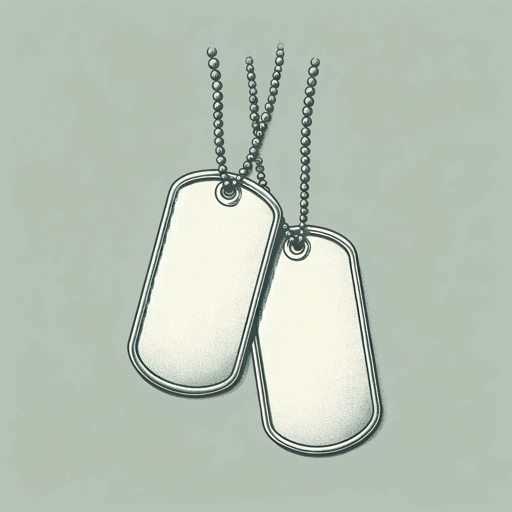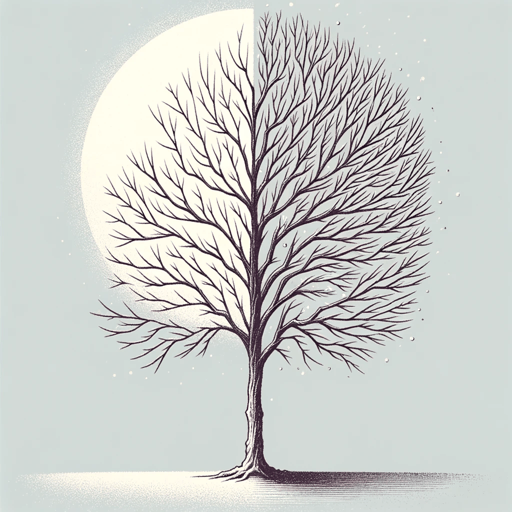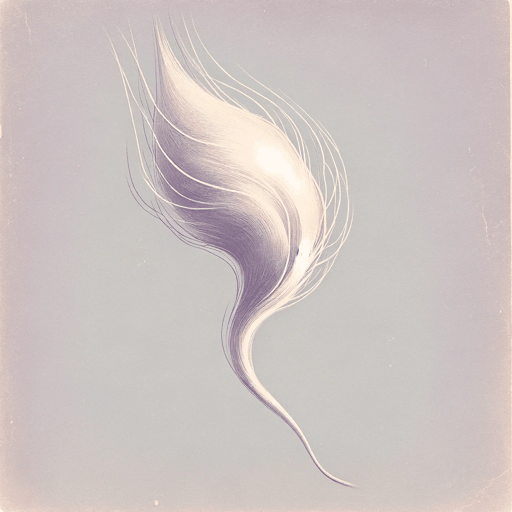21 pages • 42 minutes read
Gwendolyn BrooksThe Blackstone Rangers
Fiction | Poem | Adult | Published in 1987A modern alternative to SparkNotes and CliffsNotes, SuperSummary offers high-quality Study Guides with detailed chapter summaries and analysis of major themes, characters, and more.
Summary and Study Guide
Overview
Gwendolyn Brooks published the poem “The Blackstone Rangers” in her 1968 collection In the Mecca, which was nominated for the 1969 National Book Award for Poetry. Brooks wrote the poem during a period in her artistic life when she was examining more critically her role as a Black artist, a time when Black political and creative figures were calling for a new art for the masses eager for change.
Brooks’s exploration of the moment resulted in a work that places poems on slain Civil Rights leader Medgar Evers alongside poems about Black youths in search of themselves in the city of Chicago. “The Blackstone Rangers” includes elements of narrative, with a focus on character. The poem comprises three perspectives—the police, the Rangers themselves, and a girl who is a member of the girls’ auxiliary gang—on the Blackstone Rangers, a teenage gang that was consolidating its power in Chicago under the leadership of Jeff Fort and Eugene Hairston, founding members of the gang.
Rather than rely on defined poetic forms, Brooks uses strong images, symbols, and sounds to describe the lived reality of those confronting the gang, people inside the gang, and the interior life of a young woman who lives on the periphery of the gang. The poem’s various points-of-view allow Brooks to paint a nuanced portrait of the gang’s place in Black urban life.
Poet Biography
Gwendolyn Brooks was born in Topeka, Kansas, in 1917 but moved to Chicago with her working-class family when she was a child. She published her first poem at 13 and later earned an associate’s degree in literature from Wilson Junior College (Jackson, Angela. Surprised Queenhood in the New Black Sun: The Life and Legacy of Gwendolyn Brooks. Penguin/Random House, 2017, p. 10).
In the 1940s, she engaged with Chicago’s thriving arts scene. Her first collection, A Street in Bronzeville (1945), captures the sounds and characters in the Black Chicago neighborhood of the title. Her second collection, Annie Allen (1949), focuses on Black, working-class women and made Brooks the first Black American to win a Pulitzer Prize.
Although Brooks’s stature lessened among younger Black poets, Brooks continued writing. Brooks attended the 1967 Second Black Writer’s Conference at Fisk, a landmark event for the Black Arts Movement, which held that Black artists had a responsibility to create the conditions necessary for Black liberation. Although Brooks had always focused on the lives of Black, urban, and working-class people, her work after the conference showed a greater willingness to experiment with form and a more overt political critique of race in the United States.
In the Mecca (1968) was the first work after this watershed moment in her writing life. In the collection, Brooks focuses on the tragic lives of residents of the Mecca Flats tenement in Chicago. The bulk of the work is a story in verse about a mother’s search for her daughter, who later turns out to have been the victim of murder. Separate pieces, mostly focused on important Black figures and the consciousness of Black urban identity, make up the remainder of the poem. Brooks’s work from the 1970s broadened to include themes related to the African Diaspora (the many cultures and people of African descent across the world).
Brooks published numerous works, including Report from Part One (1972), Primer for Blacks (1980), Young Poet’s Primer (1980), To Disembark (1981), The Near-Johannesburg Boy, and Other Poems (1986), Blacks (1987), Winnie (1988), Children Coming Home (1991), and Report from Part Two (1996). She served as a consultant poet laureate for the Library of Congress, received a lifetime achievement award for the National Endowment for the Arts, and taught English at Chicago State University from 1990 to 2000. Brooks died in 2000 ("Gwendolyn Brooks." Encyclopedia Britannica, 2023).
Poem Text
Brooks, Gwendolyn. “The Blackstone Rangers.” 1967. Poetry Foundation.
Summary
In Part 1, the police describe the Blackstone Rangers as powerful and ready for a fight. There are 30 Rangers, and they are not interested in dispersing peacefully. The police see the Rangers as signs of corruption in the city.
In Part 2, the Blackstone Rangers describe themselves. Every Blackstone Ranger has a job to do. Sometimes that means killing, sometimes it means reminding people of who is in control, sometimes it means moving contraband around, and sometimes that means acknowledging the next person up in the hierarchy. This is nothing at all like the kind of power political elites exercise in downtown Chicago, but it is power still. Blackstone Rangers aren’t the typical heroes of Black liberation. Black power is supposed to be about uniting Black people through common aims and common culture, and from the right angle, this is what the Blackstone Rangers have done. Their nation is the territory they control, and it is something apart from the United States and the Black nation that Black nationalists talk about.
On this night, the Blackstone Rangers—throngs of them—are out in force, and for once, the night belongs to people who are Black. Someone in the Blackstone Rangers sent out the call that this was a night for fighting. There is no symbolic conflict like you’d see in political contests. This is bare-knuckle fighting and killing. When the Rangers look at what they’ve done, there is a curious mixture of fear, horror, and celebration over what they’ve made of themselves. It isn’t what the Black figures mean when they say Black power, but the loyalty and cohesion that such a spectacle implies is something marvelous. The Blackstone Rangers aren’t the Black nation of which Black nationalists dream. They are something more like exiles, but ones without a country to call their own.
Part 3 is from the perspective of Mary Ann, a member of the Rangers’ auxiliary gang for girls. She does what she has to in order to make it in Blackstone Ranger territory, but even she sometimes dreams of being someplace else with some other boys. That dream never quite comes true, though.
She’s this dainty, feminine thing stuck in an inhospitable environment, but there is a toughness to her as well. Her life mostly runs on in a routine, and worry, fear, or someone else dying violently are the constant disruptions she confronts. When her Blackstone Ranger comes, he might make a grand gesture, like bringing her a diamond or something intoxicating. She knows better than to ask where he got it from: He stole it, of course. Her job is to accept anything he offers her and to give him whatever he wants, which is usually for her to take a drink and to have sex with him, no questions asked.
She knows this isn’t love, but maybe it could be one day, even if it is just the love she might get from bearing his child.
Mary Ann is an adult performer’s daughter, a girl who grew up in a rented room. She watches as the Ranger has sex with her, and she pretends to enjoy what he is doing. The cries he makes when he climaxes might as well be him asking her to be content with what little he has to offer—a relationship that is temporary, an abortion, his death. For now, her relationship with him is all she has to rely on.
Related Titles
By Gwendolyn Brooks

A Bronzeville Mother Loiters in Mississippi. Meanwhile, a Mississippi Mother Burns Bacon
Gwendolyn Brooks

A Sunset of the City
Gwendolyn Brooks

Boy Breaking Glass
Gwendolyn Brooks

Cynthia in the Snow
Gwendolyn Brooks

Maud Martha
Gwendolyn Brooks

my dreams, my works, must wait till after hell
Gwendolyn Brooks

Speech to the Young: Speech to the Progress-Toward (Among them Nora and Henry III)
Gwendolyn Brooks

The Ballad of Rudolph Reed
Gwendolyn Brooks

The birth in a narrow room
Gwendolyn Brooks

The Chicago Defender Sends a Man to Little Rock
Gwendolyn Brooks

The Crazy Woman
Gwendolyn Brooks

The Lovers of the Poor
Gwendolyn Brooks

The Mother
Gwendolyn Brooks

the rites for Cousin Vit
Gwendolyn Brooks

To Be in Love
Gwendolyn Brooks

To The Diaspora
Gwendolyn Brooks

Ulysses
Gwendolyn Brooks

We Real Cool
Gwendolyn Brooks

